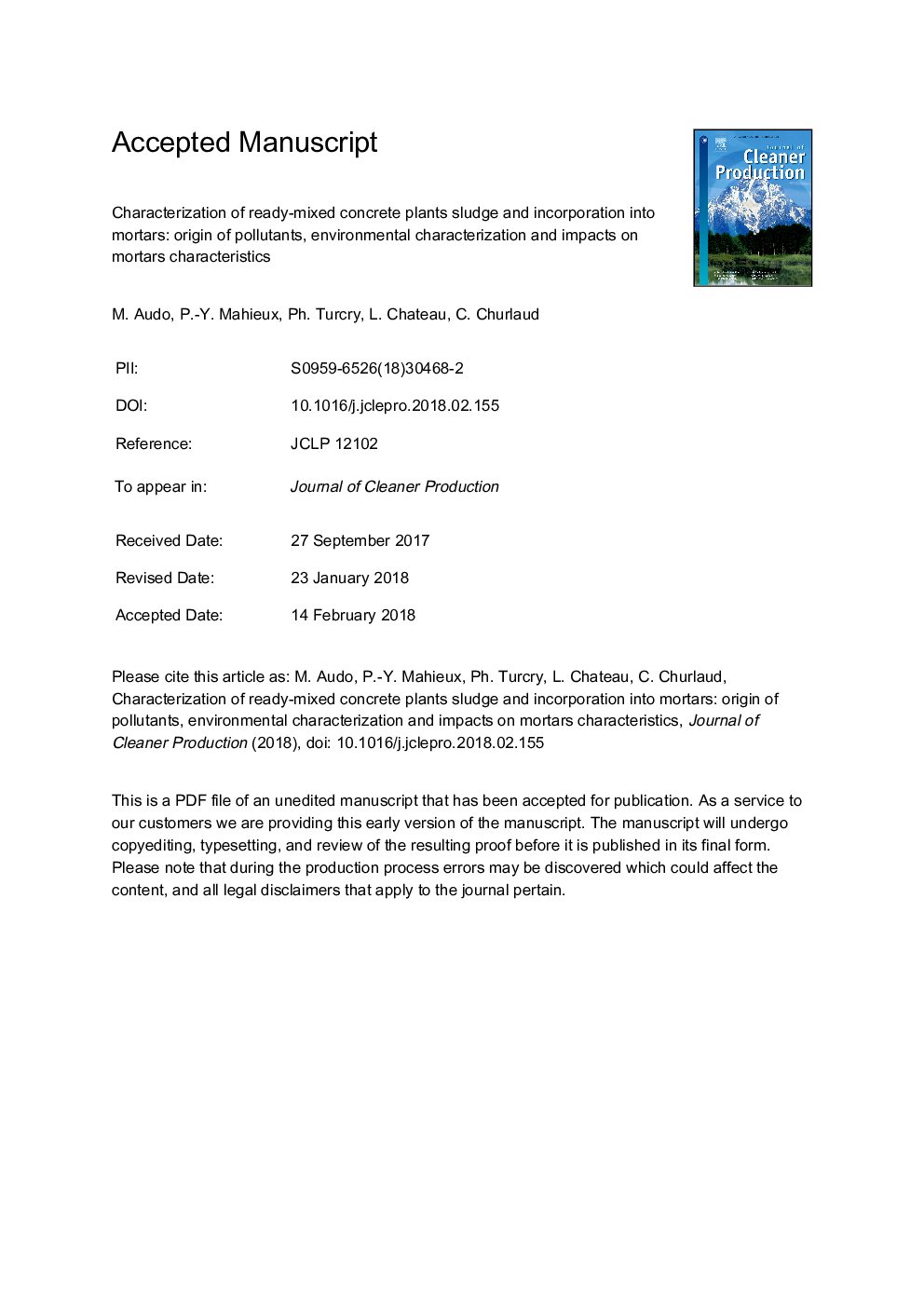| Article ID | Journal | Published Year | Pages | File Type |
|---|---|---|---|---|
| 8096970 | Journal of Cleaner Production | 2018 | 36 Pages |
Abstract
Ready-mixed concrete plants (RMCP) sludge samples were studied, particularly from an environmental point of view. Their average composition (cement, sand and filler contents) was determined through chemical analysis. Based on this composition and trace-elements contents of the raw materials used in RMCP, trace-elements contents in sludge were calculated. Good correlation was obtained with the measured contents, highlighting strong dependence between sludge composition (especially cement content) and raw materials (especially cement type). Prediction of the leaching behavior appeared to be more complex, due to variability of trace-elements leachability factor (from 0.02% for Cd to 27.47% for Ba). Nevertheless, good estimation of the environmental behavior could be achieved through an empirical predictive model (correlation coefficient higher than 0.9), allowing the prediction of the inert or non-inert nature of the sludge. Particularly, this study highlighted the importance of the type of cement used in RMCP. Indeed, the use of CEM I clinker-rich cement into RMCP leads to higher chromium contents into sludge leachates, which can modify the sludge category, from inert to non-hazardous. Finally, mortars were manufactured with sludge in order to assess their influence on the environmental properties of the mortars. Incorporation of sludge into mortars did not impact significantly the leaching behavior of the monoliths, which confirms the efficiency of this stabilisation method.
Related Topics
Physical Sciences and Engineering
Energy
Renewable Energy, Sustainability and the Environment
Authors
M. Audo, P.-Y. Mahieux, Ph. Turcry, L. Chateau, C. Churlaud,
